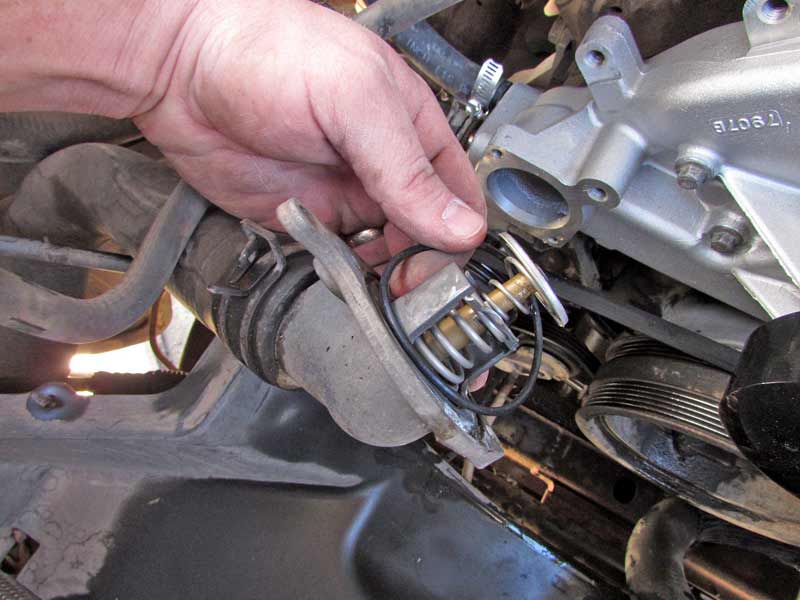What is the function of car thermostat?
When the outdoor temperature reaches 85 degrees or higher in summer, you can adjust the thermostat of your house to keep it cool and your family comfortable.After all, the thermostat's job is to adjust temperature or activate other devices, such as air conditioners, when the temperature reaches a certain level.You may be surprised to learn that most cars use thermostats as part of their engine cooling system.House thermostats are used to monitor the interior of the house, while car thermostats are used to regulate the temperature of the engine to help keep it cool.
Most liquid-cooled engines have a thermostat about 2 inches in diameter that sits between the engine and the radiator.Its job is to monitor the temperature of engine coolant to precisely regulate the flow of coolant through the radiator to ensure that the engine is operating at the optimum temperature.
An Integral Part of the Cooling System & How It Works
In addition to monitoring the temperature, the thermostat is also responsible for preventing coolant flow to the radiator when the engine temperature is low.Until the engine warms up.Coolant does not flow through the engine when it is cold.However, as the temperature rises, the thermostat starts to turn on slowly.When the engine reaches about 200 degrees Fahrenheit, the thermostat will fully turn on.Because the opening allows hot coolant in the engine to flow through the radiator, the water pump pushes cooler coolant from the radiator towards the engine.By allowing the engine to warm up as quickly as possible, the thermostat helps reduce engine wear, deposition, and release unnecessary emissions.
The thermostat is successful because of its efficient design.They are small cylinders on the side of the engine of the device, filled with wax that slowly melts at a temperature of about 180 degrees Fahrenheit, but can vary widely from vehicle to vehicle.A rod attached to the center of the valve is pressed into the wax, and as the wax melts, it expands and pushes the rod out of the cylinder to open the valve and allow the coolant to flow.The wax expands significantly because, in addition to heat, it changes from a solid to a liquid state.When the engine shuts down, the process reverses and starts again when the engine is restarted.

Common Problems With Car Thermostats
When the thermostat fails, one of two things usually happens: the thermostat is stuck in the open position or stuck in the closed position.Here's how to determine if your vehicle's thermostat is stuck on or off:
Stuck in the open position - When the thermostat is stuck in the open position, coolant continues to flow into the radiator, causing the engine to run below the recommended temperature.That's a good thing, right?Sorry, I can't.Supercooled engines actually operate inefficiently, resulting in increased fuel consumption, higher levels of emissions, and increased wear and tear on engine components.Because the coolant flow is constant and the engine temperature is not at its proper level, engine performance problems may occur.In addition, the heater may not heat properly because it uses engine coolant to generate heat.
Stuck close - When the thermostat is stuck in this position, the coolant circulation is completely blocked, preventing the coolant from entering the radiator for cooling.This can lead to extremely high engine temperatures, which can cause the vehicle to overheat.
Common Symptoms of Car Thermostat Trouble
The thermostat is relatively cheap to repair compared to the cost of replacing the engine, compared to the damage caused by excessive or repeated overheating.When it comes time to change the thermostat, your car may experience three of the most common symptoms:
High thermometer readings or engine overheating - Within a few minutes of the engine running, you will notice that the vehicle's thermometer indicates a rapidly rising temperature and may enter the red area of the thermometer.This may be the first sign of thermostat dysfunction.
Irregular temperature change - Temperature fluctuations (such as an instrument indicating that the temperature is abnormally low to immediately abnormally high) may result in poor engine performance.
Coolant leakage - Coolant leakage is obvious in multiple locations, but is common around the thermostat housing.
Though small, the thermostat is mighty. Ensuring the thermostat is working properly is vital to make sure your engine maintains the proper temperature to function. Don’t wait to have your vehicle inspected by a certified technician if it is indicating the engine is running too hot or too cold. Neglecting to address the symptoms that indicate your thermostat is under duress, could result in permanent damage to the engine which will result in costly and extensive repairs.
We will do a good job in every content,do our best to solve the problem for each customer,Thank you for your reading.




Leave A Comment